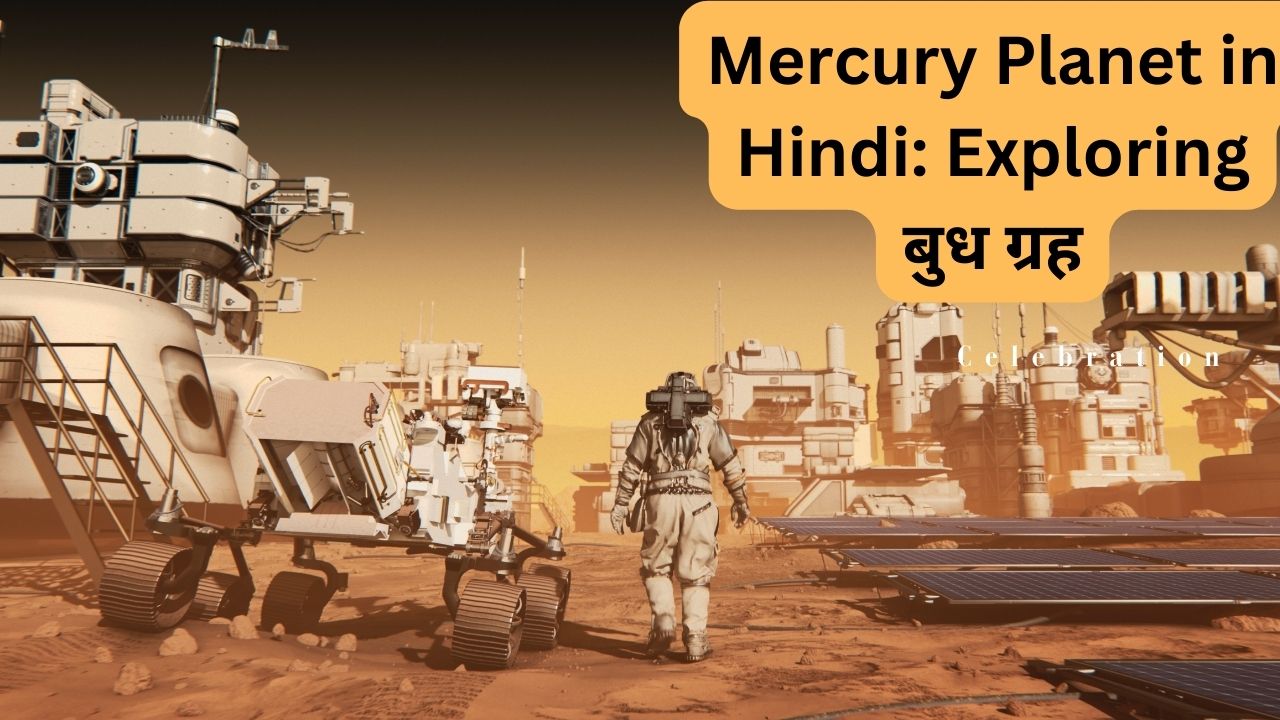Mercury, known as “Budh Grah” in Hindi, is one of the most fascinating celestial bodies in our solar system. In this article, we’ll delve into the intricacies of Mercury, exploring its physical characteristics, cultural significance in Hindi-speaking regions, exploration missions, and more.
Mercury in Hindi: बुध ग्रह का विवरण
In Hindi, Mercury is referred to as “Budh Grah,” derived from the name of the Hindu god Budh (Mercury). The planet holds significant cultural and astrological importance in Hindi-speaking regions, where it is associated with intellect, communication, and commerce.
Physical Characteristics: शारीरिक विशेषताएँ
Mercury is the smallest and innermost planet in the solar system, with a diameter of about 4,880 kilometers (3,032 miles). Despite its small size, Mercury is relatively dense, with a mass that is approximately 5.5% of Earth’s mass.
The planet’s surface is heavily cratered, resembling the Moon’s surface, with vast plains and towering cliffs. Due to its proximity to the Sun, Mercury experiences extreme temperature variations, ranging from scorching hot to freezing cold.
Orbit and Rotation: चालन और घूर्णन
Mercury orbits the Sun at an average distance of about 57.9 million kilometers (36 million miles) and completes a full orbit roughly every 88 Earth days. Interestingly, Mercury’s rotation period is about 59 Earth days, meaning it has a unique 3:2 spin-orbit resonance, causing it to rotate on its axis three times for every two orbits around the Sun.
Surface Features: पृथ्वी से विभिन्नताएँ
Mercury’s surface features a variety of geological formations, including impact craters, smooth plains, and long scarps and ridges. The planet’s lack of a significant atmosphere has preserved many of these features, offering insights into its geological history.
Atmosphere: वायुमंडल
Mercury has a very thin atmosphere, composed mainly of oxygen, sodium, hydrogen, helium, and potassium. However, this exosphere is extremely tenuous, with particles escaping into space due to the Sun’s intense radiation and the planet’s weak gravity.
Exploration Missions: अन्वेषण मिशन
Several spacecraft have been sent to explore Mercury, including NASA’s Mariner 10 and MESSENGER (MErcury Surface, Space ENvironment, GEochemistry, and Ranging) missions. These missions have provided valuable data about Mercury’s surface, magnetic field, and interior structure.
Significance in Hindi Culture: हिंदी संस्कृति में महत्व
In Hindi culture, Mercury holds immense astrological significance, governing intellect, communication, and commerce. References to Mercury can be found in ancient texts, astrology, and mythology, shaping beliefs and practices related to planetary influences.
Challenges of Studying Mercury: बुध ग्रह की अध्ययन की चुनौतियाँ
Studying Mercury poses several challenges due to its proximity to the Sun and extreme environmental conditions. Observations from Earth are limited, and spacecraft face significant technical hurdles, including thermal management and radiation exposure.
Future Prospects: भविष्य की संभावनाएँ
Despite these challenges, scientists are optimistic about future exploration missions to Mercury. Advances in technology and spacecraft design offer the potential for more in-depth studies of Mercury’s surface, composition, and geology, leading to a better understanding of our solar system’s innermost planet.
Conclusion
In conclusion, exploring Mercury, or “Budh Grah,” provides us with valuable insights into planetary formation, evolution, and cultural significance. As we continue to unravel the mysteries of this enigmatic planet, we deepen our understanding of the cosmos and our place within it.



